lundi, 26 février 2018
India and its Strategic Culture
More often than not, rules of conduct in the international field are formed by historical, cultural, religious and philosophical principles of the people (the elite), rooted in a certain geographical area. The persistence with which the mistress of the seas can boast creating new colonies far away from the Albion coasts can be seen even today: Gibraltar, the Falkland Islands (Islas Malvinas in Argentina), the Commonwealth member-states; the American Frontier Spirit transformed into a relentless desire to conduct democratic reforms in the world, and keenness on the Leo Strauss’s ideas (the scientist himself claiming the need to use double standards) helped several American neoconservatives to fulfill their ideas; Jewish messianism allowed not only the creation of the State of Israel, but also to place the country on the international level.
India also has its own national strategy which, perhaps, is not quite clear to us because of the Hindu world view, although this huge country has a significant number of not only followers of ancient polytheistic tradition and its branch, but also representatives of other cultures and religions: Muslims, Sikhs, Buddhists, all kind of Christians and Jews (six different religious Judaic groups live in different parts of India, some of them are autochthonous and adopted it in the second half of the XX century).
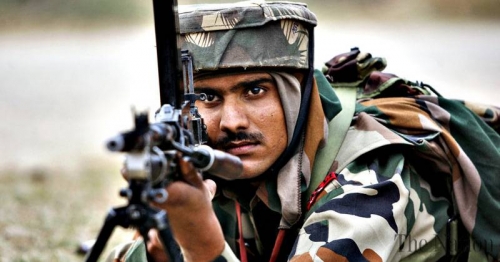
With the use of new analysis of the various doctrinal positions, it is possible to understand India's geopolitical strategy through the prism of the strategic culture of the subcontinent, which affects the entire South East of Asia in some way. Why is it important? The British theorist of international relations Professor Ken Booth gave the answer on the issue in the 1970s: “When thinking about the rational behavior of others, strategists tend to project their own cultural values ... but it should be apparent that one can only predict the behavior of a ‘rational man’ if both observer and the observed share the similar logical powers. Ethnocentric perception interferes in this process: they may mean that’s one own values and sense of priorities are projected onto others. By this process, ethnocentricity undermines the central act in the strategy of estimating how others will see and then will see and act.”[i]
For Hindus, the ethnocentric worldview is quite acceptable, as Hinduism is a “closed” religion, only Hindus can profess it, so the adoption of tradition is not possible. The Sikhs, having prominent positions in the government, are natives of Hindustan; the monotheistic religion began from the Islam and Hinduism contact as the response to the conflict issue. The special case is the Parsees, concentrating in the Mumbai, but, it’s interesting that the Zoroastrianism is a closed religion too; the proselytism is not recognized by the Indian Parsees. Indian Muslims and Christians are interesting in a particular way, even for external forces, because the general political strategy of the current Indian leadership is still based on the Hindu worldview in its various forms (epos, philosophy, religion, culture).
Another British geopolitical theorist, Colin Gray, involved in the connection of the cultural layers and the State strategy said: “No one and no institution can operate beyond culture”, and then added that "the nature and function of the strategy are unchanging and universal, and dynamic historical form and content are inescapably cultural".[ii]
It is necessary to try to look at the political culture of the country to understand its actions in the international arena, not only in terms of pragmatism, which mainly focuses on the supply and security of energy resources, but also in terms of the worldview.
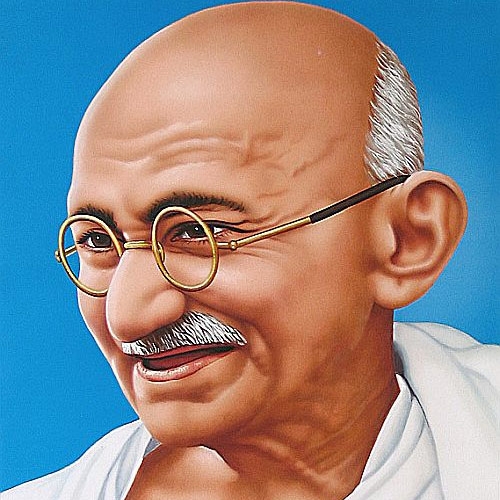 After India became independence in 1947, the country was mainly regarded as pacifist, because of the Mahatma Gandhi strategy toward the British colonialists. A non-resistance to evil with violence was popular in the various anti-war movements in Western Europe and particularly in the USA during the Vietnam War. However, Gandhi used the concept of Satyagraha (insistence on truth) as an instrument of political struggle that was not based on national and popular Hindu tradition, but on the eclectic mixture of reformist Hinduism, the Upanishads and Jainism philosophy, promoting prohibition of the living creature’s murder, including harmful insects. The post-colonial heritage is important too. In the 1980s, А. К. Коul of the University of Delhi said that the whole concept of international law was based on the rationale and justification of the lawfulness of the Third World enslavement and plunder, which has been declared uncivilized.[iii] Such a critical approach sought for new ways to solve problems, and Koul introduced the concept of international law, which aimed at solving the problems of underdeveloped countries. He was supported by the international affairs lawyer R. P Anand, noting that "since international law is now supposed to be applicable to the world-wide community of states, including the new Asian-African states, it needs their consent no less. It must be modified to suit new interests and a new community."[iv] Despite the quite reasonable thoughts, ideas of these scientists were not relevant for the era. But now these concepts may well be applied within framework of BRICS.
After India became independence in 1947, the country was mainly regarded as pacifist, because of the Mahatma Gandhi strategy toward the British colonialists. A non-resistance to evil with violence was popular in the various anti-war movements in Western Europe and particularly in the USA during the Vietnam War. However, Gandhi used the concept of Satyagraha (insistence on truth) as an instrument of political struggle that was not based on national and popular Hindu tradition, but on the eclectic mixture of reformist Hinduism, the Upanishads and Jainism philosophy, promoting prohibition of the living creature’s murder, including harmful insects. The post-colonial heritage is important too. In the 1980s, А. К. Коul of the University of Delhi said that the whole concept of international law was based on the rationale and justification of the lawfulness of the Third World enslavement and plunder, which has been declared uncivilized.[iii] Such a critical approach sought for new ways to solve problems, and Koul introduced the concept of international law, which aimed at solving the problems of underdeveloped countries. He was supported by the international affairs lawyer R. P Anand, noting that "since international law is now supposed to be applicable to the world-wide community of states, including the new Asian-African states, it needs their consent no less. It must be modified to suit new interests and a new community."[iv] Despite the quite reasonable thoughts, ideas of these scientists were not relevant for the era. But now these concepts may well be applied within framework of BRICS.
If you look at India's political transformation, the Constitutional model was borrowed from the USA, and it was developed considering the cultural characteristics of each region (India has 28 states, 21 official languages, and more than 1,600 dialects). The traditional caste system is preserved in fact, but legally all Indians have equal rights and possibilities, the lower castes representatives in the southern states even formed the Dalit Panthers political movement and gathered foreign assistance (incl. Soros foundation and US organizations) for the promotion of their rights.
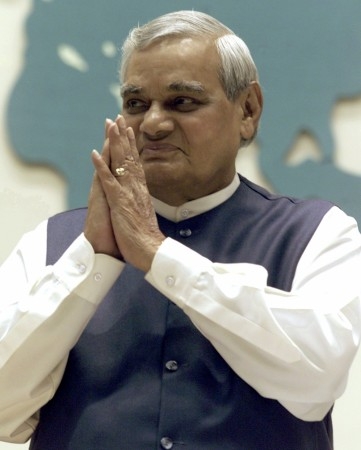 Throughout the independent state’s history, within Indian political circles, the fluctuation from secularism to traditionalism was also noticeable. Despite this fact, as Stephen Cohen noted, since Nehru to Rajiv Gandhi’s term and then under the Vajpayee’s Indian People's Party there was antagonism in local cultural issues (the previous ruling Congress was secular, whilst Vajpayee’s Party was culturally nationalistic – Hindutva), the international and defense policy remained the same strategic policy[v]. It is worth noting that the Indian People Party (Bharatiya Janata Party), founded in 1980, received special attention from the American analysts, as, during the Atal Bihari Vajpayee term, the relations with the US were improved. The governing of Jawaharlal Nehru, representing the left wing of the Indian National Congress, called the course to achieve a society based on the principle of continuity and the balance of change, its political program was even named the Neruvianism. It consists of supporting national entrepreneurship, protecting it from foreign competition, private sector state regulation, hard control of financial transactions, and, in the public sector, primary development of main heavy industry sectors.[vi]
Throughout the independent state’s history, within Indian political circles, the fluctuation from secularism to traditionalism was also noticeable. Despite this fact, as Stephen Cohen noted, since Nehru to Rajiv Gandhi’s term and then under the Vajpayee’s Indian People's Party there was antagonism in local cultural issues (the previous ruling Congress was secular, whilst Vajpayee’s Party was culturally nationalistic – Hindutva), the international and defense policy remained the same strategic policy[v]. It is worth noting that the Indian People Party (Bharatiya Janata Party), founded in 1980, received special attention from the American analysts, as, during the Atal Bihari Vajpayee term, the relations with the US were improved. The governing of Jawaharlal Nehru, representing the left wing of the Indian National Congress, called the course to achieve a society based on the principle of continuity and the balance of change, its political program was even named the Neruvianism. It consists of supporting national entrepreneurship, protecting it from foreign competition, private sector state regulation, hard control of financial transactions, and, in the public sector, primary development of main heavy industry sectors.[vi]
However, if we are talking about strategic culture, we need to address the historical heritage of the heroic character whose images attract mass consciousness and the national leader’s thought. Therefore, it is necessary to note the central Indian epos, Mahabharata and Ramayana. The first is the story of the struggle between two clans and an eternal cycle of events where many things are already predetermined, and the second one is about the fight of the gods and their assistants against the demons. It is natural that, as the monuments of national literature, through folklore, celebrations and customs, these imperatives entered the life of the population and the elite. Moreover, the strategy development, especially in state governance and war waging, was affected by the famous work Arthashastra written by a famous Indian thinker Kautilya (IV-III c. BC), which served the interests of the Maurya dynasty. Many Indians and even foreign lawyers quote the book and as a model of pre-Roman legal norms code, the traditional law. According to US analyst Rodney Jones, who wrote a lot of works on the Indian strategy, trying to find out the Hindu code to the international relations lock, Kautilya’s advice to the governors consists of the detailed description of the correct usage of power, espionage and poisons (in modern time, it can be regarded as chemical, bacterial or nuclear weapons)[vii]. According to Kautilya, the region is to face military conflicts, therefore, it needs to be prepared for a plot twist and maybe create military alliances with other states. Naturally, in the XX century, Indian politicians took into account this factor too.
Jones himself is the president of the Policy Architects International Company, and before that he spent a lot of time visiting India, Pakistan and Sri Lanka, as he was the son of Christian missionaries sent to the countries. In the USA, before establishing his company, Jones graduated from the Columbia University, and he worked as a professor at Kansas State University, and, in the mid-1970s, he carried out research at the Council on Foreign Relations and worked on the security issues in the Carter’s administration. In addition, he worked on arms control at Georgetown University Center for Strategic and International studies. So, in spite of its Western origin, it has in a sense taken his opinion into account.
Jones identifies a number of items that are in fact philosophical and mythological, but are the fundamentals for the strategic culture of India:
1. Sacred things are a part of the Indian identity
2. Objectives are endless and have no deadlines
3. India gained its status, and did not earn it
4. Knowing the truth is the key to action and power
5. World Order is hierarchical, not egalitarian
6. Instrumental meaning
7. Indian appearance is mysterious
8. Personal interest, expressed externally, is impersonal and absolute
9. The contradictions in real life are natural and confirmed
10. Power has its place, but trick can exceed force
11. Actions have consequences; good intention does not justify offense
12. Standards of law prohibit conventional compromise (it is difficult to find the difference, though not mitigated with the quid pro quo)
13. Compromise can be easily mistaken for an internal loss (ephemeral, truth deformation, lack of sovereignty)
14. Confidence is correct knowledge and actions; it is impersonal and difficult to build or to fill in
15. Security is a sit-down (it covers the geographical situation or way of life)
16. Strategy is assimilating (external is changing, reality is constant).
Based on these provisions, Jones proposes to include such categories as war and peace when considering Indian policies. The conflict is directly related to the strategic culture, according to one of the authors of this concept, Alistair Johnston, and the answers on three important questions is at the center of it: war’s role in international relations, the enemies nature and the threats they may pose, and the use of force.[viii] Jones writes that since the 1960’s, India was preparing a defense on two fronts: against Pakistan and China.[ix] The author also notes that until January 2003, the Indian official policy on the use of nuclear weapons stated it is acceptable only if India does not fire first, it must be a response to an attack. This policy was based on India's nuclear doctrine, published in August 1999. However, in 2003, the “Implementation of the Indian nuclear doctrine” stated that nuclear weapons would be used if chemical or biological weapons are used against Indian troops, and, most importantly, even its troops are located outside the Indian territories.[x] The incident in Mumbai, when Islamic Terrorists had successfully crossed the Pakistan border and made a small "jihad" in the economic capital of India, forced the authorities to think about other measures of deterrence and control, including informational systems.
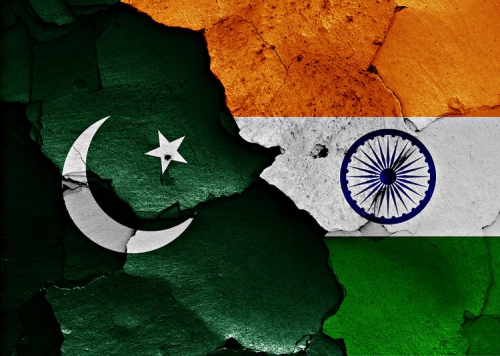
However, the Pakistan issue is more or less clear. The enemy image fits in this scheme: the Indian conquerors (I do not mean the mythical Aryan invasion, but a particular Muslim army that built in the the Mughal Empire north of India) came from the current northwest territories of Afghanistan and Pakistan. They had to fight and subdue not only the followers of Hinduism, but also by the adherents of the new syncretic monotheistic religion of the Sikhism, who have their sanctuary in the Golden temple dozens kilometers from the Pakistani border, in Amritsar. If the Muslims invaded Indian lands, the “white colonizers” arrived by sea: the Portuguese, the Dutch and the British controlled the south of Hindustan one after the other, exploiting its natural resources. The China issue is more complicated. Historically, Chinese emperors did not disturb the Indians because of the natural border, the Himalayan mountain range and the impenetrable jungle in the south. Although now India has several territorial disputes with China, or rather China has more claims on India, including the Tibetan Dalai Lama, whose headquarters where we takes shelter is located in the border region, Himachal Pradesh. India is more concerned about water resources: the sources of the Brahmaputra and the Ganga starts in Chinese Tibet.
However, in India there are different points of view on the problematic relations with its neighbors. Kanti Bajpai noted that after the end of the Cold War, India had three branches of possible strategic development. He calls them Nehruvianism, hyperrealism, and neo-liberalism. Bajpai insists that the hyperrealists have the most pessimistic view of international relations: “Where Nehruvians and neoliberals believe that international relations can be transformed either by means of communication and contact, or by free market economic reforms and the logic of comparative advantage, hyperrealists see an endless cycle of repetition in interstate interactions. In fact Hinduism regards time as an eternal cycle of sequences, human souls endures these too, continually reincarnating from one essence to another, thus Westerners - with their linear understanding of time - do not understand Indian sluggishness. Conflict and rivalry between states cannot be transformed into peace and friendship, except temporarily as in an alliance against a common foe, rather they can only be managed by the threat and use of violence.”[xi] In addition, hyperrealists reject their opponents’ objections to the unrestrained spending on weapons, and expressed doubt on the roles of institutions, laws and agreements. The IR-hyperrealists take into account only power and the strength; everything else is an illusion. Accordingly, the Nehruvianists and the neoliberalist regard war as one of the possibilities that can take place between sovereign states. For Nehruvianists, a natural state of anarchy can be reduced by agreements between states, so that war preparations to the point where the balance of power becomes a central factor of security and foreign policy are wasteful and useless. The neoliberals find that competitive arming, or arms races themselves, are a conditioning factor in the natural state of anarchy among the states, in particular, since they are interdependent. Therefore, they consider that economic strength is the primary goal for a state to be vital, which should be achieved through free markets and free trade abroad.[xii] The hyperrealists have quite a different point of view. Brahma Chellaney notes that war starts when adversaries determine that the other side has become too strong or too weak.[xiii] Therefore, war preparation is a responsible and wise perspicacity, not an instigation. Therefore, aggression against neighbors, if the issue is about a territorial dispute or any other contradictions, are considered not only acceptable, but even necessary by the hyperrealists.
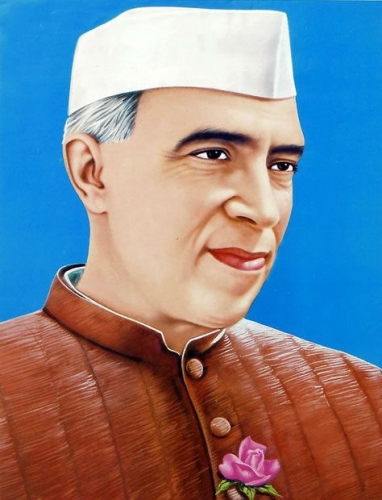 So, you can extract some conclusions which are quite clear: the Indian hyperrealists can use external forces to justify the escalation of a conflict, while the Nehruvianists would try to reach a consensus, and the neoliberals would resolve issues from the pragmatic (economic) point of view. Russia has a significant advantage. It doesn’t have common borders with India, it has quite a good attitude toward it, that is based on historical experience. India, along with Russia, is part of BRICS, and is ready to participate in the development of new international rules. Russia can interact wisely with the representatives of all three branches of India's strategic culture. The hyperrealists will be extremely interested in Russian weapons, modernization programs and, generally, a wide range of military cooperation. In some cases, Russia can use smart power and send certain signals to countries like Pakistan and China, through the Indian hyperrealists. Parenthetically, Bangladesh and Nepal should not be taken into account, as they don’t have any effect on the regional balance of power. The neoliberal approach can be used from a purely pragmatic point of view: trade, economic, and industrial cooperation. Nuclear energy, as well as research and high-tech, including the aerospace industry, may be quite promising to Russia, and these interests are included in the Nehruvianists’ agenda.
So, you can extract some conclusions which are quite clear: the Indian hyperrealists can use external forces to justify the escalation of a conflict, while the Nehruvianists would try to reach a consensus, and the neoliberals would resolve issues from the pragmatic (economic) point of view. Russia has a significant advantage. It doesn’t have common borders with India, it has quite a good attitude toward it, that is based on historical experience. India, along with Russia, is part of BRICS, and is ready to participate in the development of new international rules. Russia can interact wisely with the representatives of all three branches of India's strategic culture. The hyperrealists will be extremely interested in Russian weapons, modernization programs and, generally, a wide range of military cooperation. In some cases, Russia can use smart power and send certain signals to countries like Pakistan and China, through the Indian hyperrealists. Parenthetically, Bangladesh and Nepal should not be taken into account, as they don’t have any effect on the regional balance of power. The neoliberal approach can be used from a purely pragmatic point of view: trade, economic, and industrial cooperation. Nuclear energy, as well as research and high-tech, including the aerospace industry, may be quite promising to Russia, and these interests are included in the Nehruvianists’ agenda.
In addition, India's strategic culture can give us another important lesson, which is their economic and market system. These are conducted in such a way that the majority of products and services are oriented towards the domestic consumer, so any financial catastrophe occurring in the external environment, and having a domino effect elsewhere, will not be disastrous for India. If Russia can use a reasonable approach to this issue, such a market model based on the autarky principle (self-sufficiency) may be used in a number of regions of the Russian Federation. On the other hand, external capital flows to India from migrant workers, who settled in other countries: the US, the UK, the Gulf, etc, creates an additional source of revenue for the state.
It should be noted that India is inclined to reconsider its strategies. We are not only talking about the military doctrine of the “Cold Start”, which was recently modified, but also about its strategic culture in general. The National Security Adviser, Shivshankar Menon, believes that it is important to develop a new “vocabulary” and concepts to resolve 19th century issues. According to him, due to the opportunities provided by growth in India, it needs to interact more with the Western world, but the main line of strategic culture of the country will remain unchanged, as it is “'an indigenous construct of over a millennium, modified considerably by our experiences over the last two centuries … Fortunately for us, there is no isolationist stream in our strategy”.[xiv]
[i] Ken Booth, Strategy and Ethnocentrism. New York: Homes & Meier Publishers, 1979, р 65.
[ii] Colin Gray, Modern Strategy, New York: Oxford University Press, 1999, р 129.
[iii]КоulА. К. The North-South Dialogue and the NIEO//New horizons of international law and developing countries. NewDelhi, 1983. P. 171.
[iv]Anand R. P. International law and the developing countries. NewDelhi, 1986. P. 107.
[v] Stephen P. Cohen. India: Emerging Power. Washington, D.C.: The Brookings Institution, 2001.
[vi]Mukhaev R.T. Geopolitics, Moscow, 2007, p. 553
[vii] Rodney W. Jones. India’s Strategic Culture. Defense Threat Reduction Agency Advanced Systems and Concepts Office. 31 October 2006, р.5.
[viii]Alastair Iain Johnston, Cultural Realism: Strategic Culture and Grand Strategy in Chinese History, Princeton: Princeton University Press, 1995.
[ix]Rodney W. Jones. Conventional Military Imbalance and Strategic Stability in South Asia. SASSU ResearchPaperNo. 1, March 2005, р. 9.
[x]Ibid. p. 13.
[xi] Kanti Bajpai. Indian Strategic Culture. — South Asia in 2020: Future Strategic Balances and Alliances, Strategic Studies Institute, November 2002, P. 245 — 305.// http://www.stramod. ru/SP_001.html
[xii] Shiv Shankar Menon. K. Subrahmanyam and India’s Strategic Culture. National Maritime
Foundation, 19 January 2012 http://www.maritimeindia.org/article/k-subrahmanyam-andin...
[xiii] On the importance of national power or strength, См. Brahma Chellaney, .Preface,. in idem, ed., Securing India’s Future in the New Millennium, p. xviii
[xiv] India needs to modernise strategic culture. Sify News. Jan 20, 2012. http://www.sify.com/ news/india-needs-to-modernise-strategic-culture-news-national-mbus4jccahb.html
00:21 Publié dans Actualité, Géopolitique | Lien permanent | Commentaires (0) | Tags : inde, asie, affaires asiatiques, politique internationale, géopolitique, géostratégie, leonid savin |  |
|  del.icio.us |
del.icio.us |  |
|  Digg |
Digg | ![]() Facebook
Facebook



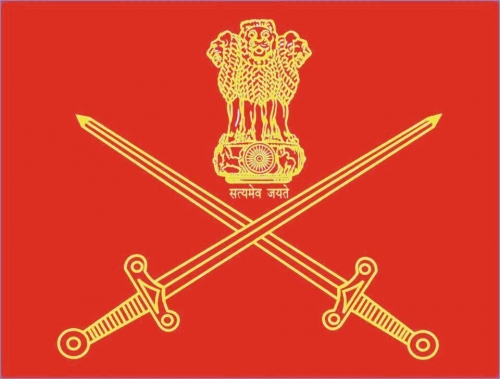
Les commentaires sont fermés.